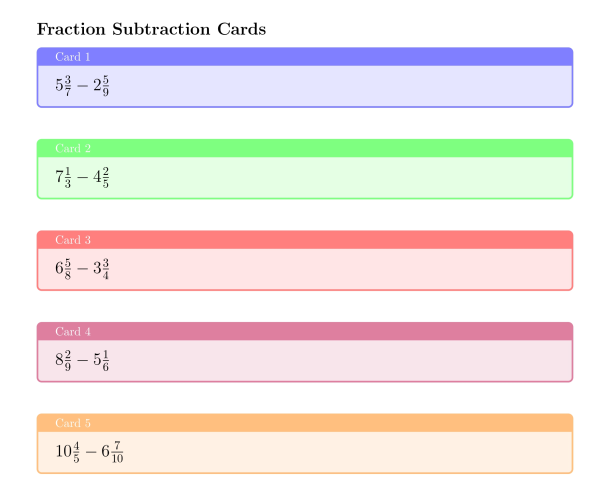Convert the mixed fractions into improper fractions.
\(7 \frac{2}{5} = \frac{(5 \times 7)+2}{5} = \frac{37}{5}\)
\(3 \frac{1}{4} = \frac{(4 \times 3)+1}{4} = \frac{13}{4}\)
The denominators are different, so we have to find the Least Common Multiple (LCM) of the denominators, i.e., LCM of
\(5\) and
\(4 =\) \(20\text{.}\)
With the help of the LCM, we will write their respective equivalent fractions so that they become like fractions.
Multiply the numerator and denominator of
\(\frac{37}{5}\) by
\(4\) to get
\(\frac{148}{20}\text{,}\) and also multiply the numerator and denominator of
\(\frac{13}{4}\) by
\(5\) to get
\(\frac{65}{20}\text{.}\)
Now, we have both the fractions with the same denominators, that is, they have been converted to like fractions. So, we can add them, i.e,
\begin{align*}
\frac{148}{20} + \frac{65}{20} \amp = \frac{148 + 65}{20} \\
\\
\amp = \frac{213}{20}
\end{align*}
Convert the improper fraction
\(\frac{213}{20}\) to a mixed fraction as,
\begin{align*}
\frac{213}{20} \amp = 10 \frac{13}{20}\\
\\
\amp = 10 \frac{13}{20}
\end{align*}

